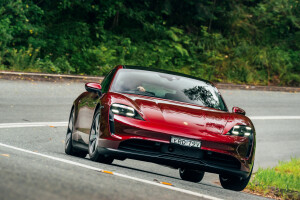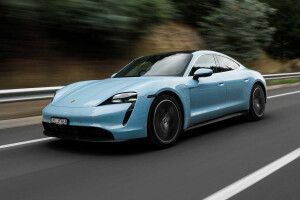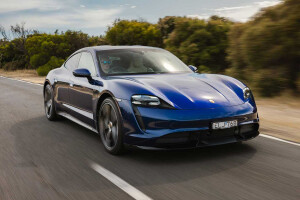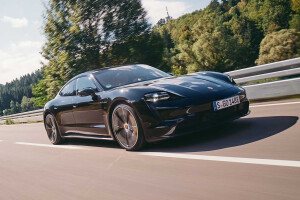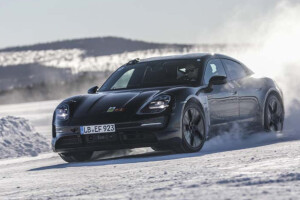Latest Review
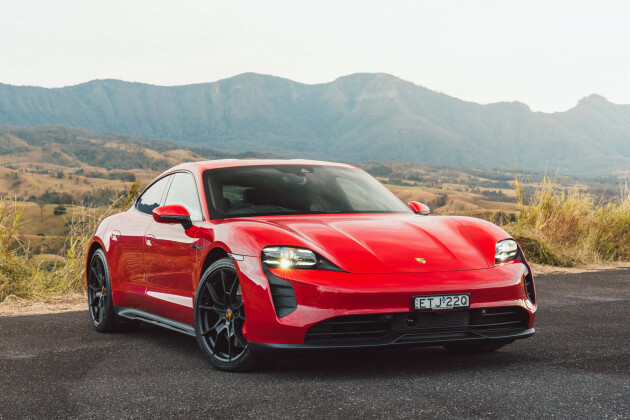
2022 Porsche Taycan GTS review
Electric Taycan honours the GTS mantra as well as any petrol Porsche before it
Since its introduction in 1963, Porsche’s GTS badge has represented a particularly desirable point in each of the German manufacturer’s model ranges – and now it has been electrified, to create the 2022 Porsche Taycan GTS.
Whether it was applied to a large SUV, small convertible or the iconic 911, GTS has been synonymous with gently enhanced performance, luxury and style without crossing the line into garish opulence or hardcore RS and sledgehammer Turbo territory.
It’s a solid brand that has worked almost flawlessly with petrol-powered models in all classes, but is the equation strong enough to be transposed into the company’s first electric vehicle?
For $241,900 before on-road costs, Porsche has completed its GTS family in Australia with the very first electric vehicle to be branded with the special GTS moniker and adding a premium of about $47,000 over the Taycan 4S.
The Taycan line-up is now eight variants deep, so how does the ambitious newcomer fit in?
In the case of the Turbos, all appears to be working well, with the Taycan Turbo and Turbo S applying the maximum-punch principle in spectacular style, but the GTS treatment is traditionally more subtle and balanced than that.
When Porsche waved its GTS wand over the 992 911, for example, it gained a light but noticeable power and torque increase with 20Nm extra and 22kW compared with the 911 Carrera 4S. The Taycan GTS you see here though – it has up to a whopping 80kW and 210Nm over the Taycan 4S.
Along with the significant upgrade to its 800-volt electrical system, the Taycan GTS also gets a recalibrated adaptive air suspension system and Porsche Active Suspension Management to provide a sharper driving experience – something which extends to the GTS's optional rear-wheel steering.
Then there are the wheels themselves, which are the same 20-inch rims fitted to the Taycan Turbo S but finished in satin black – a theme that runs throughout the GTS exterior and cabin.
Adding to the blacked-out styling touches, the GTS cabin is given a more premium feel without compromising on sporty appeal with a liberal application of Race-Tex synthetic suede for the seats, roof liner, centre console, lower portion of the dash and the slim and sporty steering wheel.
Jumping straight into the Taycan GTS after a blast in the 911 equivalent feels very familiar and Porsche has been typically consistent in the application of GTS touches.
Once again, the car-maker has aced the enhancement of luxury without cheapening any high-performance credentials.
That said, the full lovely GTS interior added to our test car with Carmine red costs another $8370 on top of the base price.
Like the other GTS variants, there’s the slick-looking Sport Chrono package included as standard, forming a centrepiece with the beautiful stopwatch atop the dashboard; below that is a masterclass in Porsche minimalist design.
Once again, the car-maker has aced the enhancement of luxury without cheapening any high-performance credentials.
Expansive digital touchscreens are impressive not through sheer size, but their integration. The driver’s digital instruments mimic even the earliest Porsche dash pod with an elegant curve, while the centrally mounted climate and information screens are flush and feature beautifully sharp graphics.
Visually, the effect is striking, but the odd volume knob and hard button would make the overall functionality of the system as likeable as the aesthetics. That said, a little time spent in the GTS would likely negate most of this qualm.
In our particular test car, there’s a fourth display for the front passenger that duplicates most of the vehicle, trip, and entertainment information. Unfortunately, Australia doesn’t have the option to present TV or film entertainment via the screen as it does in other less overbearing nations like, err, China.
On the road
Watching a movie in the passenger seat of the newest Taycan to join the EV family is to waste a thoroughly enjoyable driving experience regardless of the roads – or the seat you’re occupying.
With the changes to the air suspension system and adaptive dampers, the Taycan GTS has a number of significantly different personalities at its disposal.
In the most comfortable setting, the GTS has the grace and elegance that other variants have already demonstrated, covering cruising kilometres with absolute ease.
Even some of Queensland’s storm-ravaged blacktop couldn’t faze the pleasant and stoic ride, with only the nastiest potholes sending a shiver through the low-profile tyres and stiff monocoque. Road roar and wind noise are also impressively quiet thanks to a slippery drag coefficient of 0.22cd.
But it’s when you find a more interesting road that the GTS really shows its value. With the driving mode selector spun round to Sport or Sport Plus, the three-chamber adaptive air springs are surprisingly aggressive and allow the Taycan to be hustled from apex to apex.
It carries a significant 2.3-tonne unladen weight, but it also disguises it commendably with a combination of good old-fashioned engineering and cutting-edge tech.
Firstly, front-to-rear balance is excellent on the GTS, promoting aggressive corner entry and allowing the weight to help the car turn in – not unlike a mid-engined model or even its 911 sibling.
It won’t, however, start to oversteer if power is backed off mid-corner and holds a line with a pleasant stubbornness.
In the tightest corners, the effect of the optional rear-steering can be fully appreciated but if pushed too hard, the Torque Vectoring Plus system can be felt shifting power between front and rear motors and even individual corners. Not only is the result an amazing ability to lock onto a tight line but the absence of embarrassing tyre squeal.
It also handles fast cornering effortlessly. There’s a bit of roll but the body settles with an almost MX-5-like honesty, allowing the limits to be carefully monitored – rather than a loss of grip suddenly dropping in your lap. Running out of options in a 2.3-tonne Porsche at speed is not something anyone should experience.
Porsche’s suite of clever electronic stability systems is certainly in part responsible for the way a large and heavy sedan makes its way around a track without embarrassing its custodian, but the point at which talent is exhausted and when Traction Management (PTM), Stability Management (PSM) and optional $6870 Dynamic Chassis Control Sport (DCCS) comes into play is seamless.
A squashy brake pedal is the least Porsche-like attribute of the GTS’s character, but the transition from aggressive regenerative braking (up to 275kW of recuperation) into the hydraulic six-piston calipers’ braking is very hard to spot, enabling confidence in stopping power – which is very typical of a Porsche.
Following five laps of Norwell’s challenging corners on a 25°C day, the Taycan’s brakes were hot but nowhere near as punished as expected, indicating a heavy reliance on regen even when under track conditions.
Battery, range and power
Power and performance is also another standout from the GTS transformation.
In everyday driving, the 800-volt system and 93.4kWh battery can pump the motors up to a maximum of 380kW and 850Nm but a limited overboost function ups the power to 440kW.
Power and performance is also another standout from the GTS transformation.
It wasn’t just a matter of plugging in a laptop and liberating a few more electronic horses; Porsche actually adapted the pair of motors specifically for the GTS to result in a bespoke GTS drivetrain.
Acceleration, therefore, is scintillating and a zero-to-100km/h dash is possible in 3.7 seconds, says Porsche. Perhaps more useful and enjoyable than off-the-mark acceleration, though, is the Taycan GTS’ ability to take off while already at speed.
You might not be as much of a fan as I am of Porsche’s Electric Sport sound but pushing the Taycan on track highlights a practical purpose.
With very little ‘natural’ sound to understand what the drivetrain is doing, it’s not hard to lose perspective on just how much pace the GTS has gathered when on an unbridled race track – especially when second gear thumps in.
The strangely likeable whirring and whining, however, provides a useful way to keep an eye (ear) on the speed, while the rest of your senses may be telling you the velocity is much lower.
Despite the swathe of performance, when driven more sedately, the GTS will still cover about 485km on a single charge.
Ergonomics are also excellent for taking the Taycan to the track. The sports seats are not as deeply bucketed as some previous GTS variants but still more than adequately supportive (same goes for the rear seats if you have up to two passengers who are up for a lap too), while the driving position is a treat – allowing a long-legged-short-arm posture.
The snub bonnet drops quickly out of sight for positioning the Taycan confidently on track and the sharp steering is another calling card of the best Porsche machinery.
Despite the swathe of performance, when driven more sedately, the GTS will still cover about 485km on a single charge.
VERDICT
It’s hard to imagine how Porsche could have made their hugely impressive EV any better for a combination of road and track use and the traditional GTS blend of added performance with subtle luxury enhancements has been perfectly applied with no compromises from the electric drivetrain.
And yet there’s one thought I keep coming back to. I still feel the lighter and more raw rear-drive entry-level Taycan has much to offer despite a power and performance deficit, and the GTS transformation might work beautifully when applied to the most affordable version.
It would lack the excellent air suspension trickery, as well as the rear-steer agility, but a lighter, coil-sprung two-wheel-drive Taycan dressed up in the gorgeous GTS war paint would certainly be the Taycan for purists.
While we’re talking about things you can’t have, our fantasy would go further into a more off-road-focused Cross Turismo GTS that Porsche has no plans to build at this stage. And while other regions are offered a Sport Turismo GTS, Australia is unfortunately not on the list.
That said, the Taycan GTS does still offer a compelling range-splitting variant that appears to make a lot of sense, with a level of performance and exclusivity that brings more for your dollar than anything else in the current line-up.
If the Taycan recipe is something that might work for your taste and budget, the GTS is easily the version that has the greatest bandwidth and demonstrates just what this impressive EV is capable of.
2022 Porsche Taycan specifications
Score breakdown
Things we like
- Mass-defying dynamics
- Sharp but subtle good looks
- Bang for buck
Not so much
- No volume control knob or frequently used hot-keys
- No Cross Turismo
- Wouldn’t a rear-drive GTS be great?
News
-
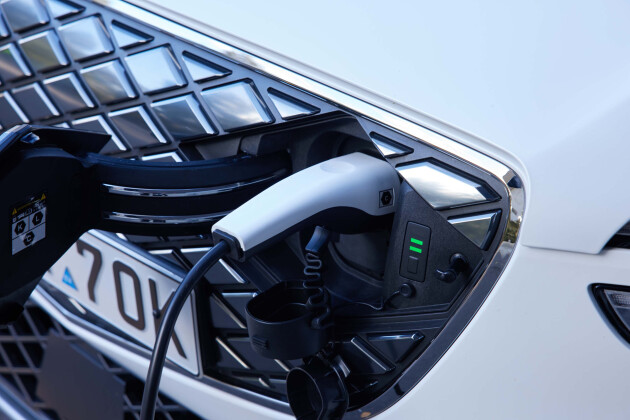 Advice
AdviceHere are the fastest-charging electric vehicles
Here’s the what’s-watt on electric vehicle battery capacity and charging times
-
 Advice
AdviceHow much more expensive are electric cars?
Amid inevitably increasing new car prices, how big is the electric vehicle price premium today?
-
 News
NewsPorsche produces 100,000 Taycans amid supply shortage
The Porsche Taycan has marked a production milestone, while facing COVID-19 challenges and ongoing supply shortages
-
 News
NewsPorsche’s future: Macan EV 'delayed', 3-row SUV coming
A new report suggests software-related issues have delayed the launch of the new electric Macan, as development work on a three-row SUV commences
-
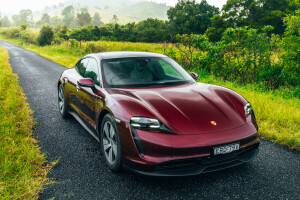
Porsche offers free update for all Australian Taycans to give them MY23 tech
-
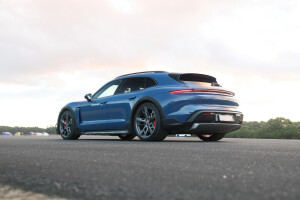
2022 Car of the Year contender: Porsche Taycan Cross Turismo
-
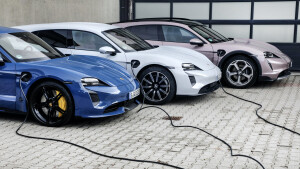
How Porsche is testing the Taycan's ability to power the grid
-
The weigh-in: the 2022 Car of the Year contenders on the scales


